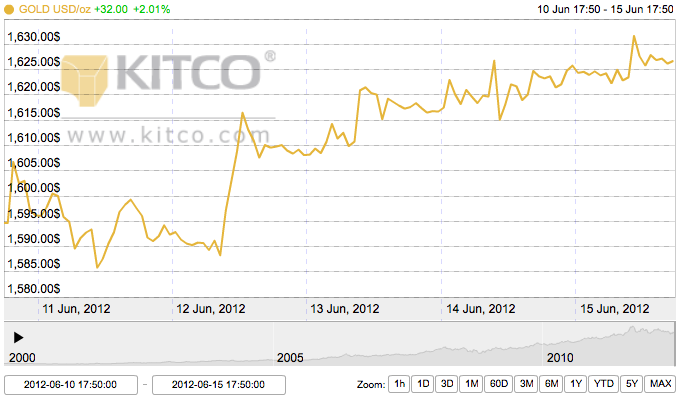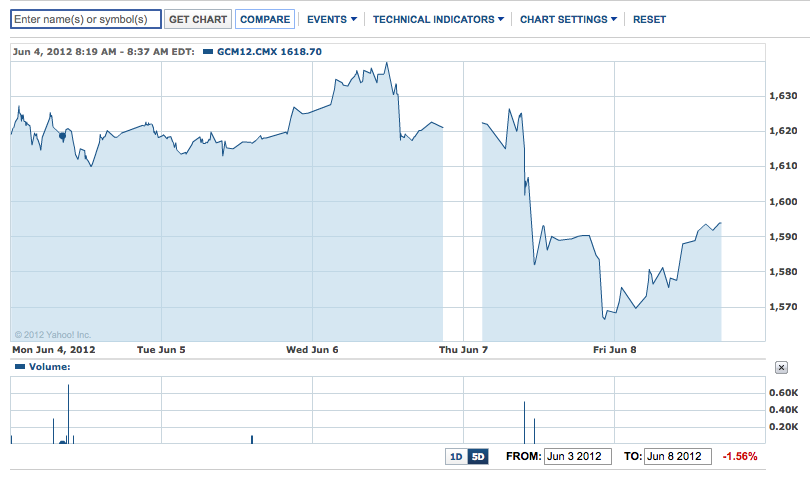Monday Open: $1,594.70
Weekly High: $1,631.70
Weekly low: $,1585.80
Friday Close: $1,626.70
Gold has been on a steady upturn this week, trading fairly consistently above the $1,600 level. The metal has rebounded dramatically since last week’s pull away from the market when Federal Reserve Chairman Ben Bernanke gave no sign as to U.S. economic easing. This week, gold investors became more concerned with the European debt crisis, and the price of gold rallied when it became clear that Spain, Italy and Greece are all facing even more severe economic worries.
Monday started trading significantly higher than last week’s close after a rescue loan of $125 billion to Spain fell short of expectations to ease the country’s long-term economic instability. Italy also experienced greater debt, and Greece’s economy is in limbo as voters take to the polls on Sunday.
Wednesday saw modest gains, partly due to the release of more weak U.S. economic data. The entire week has seen asteady growth in gold, especially compared to the volatility of the past few weeks. Friday closed solidly above the $1,600 line.
However, while prices continued to rise throughout the end of the week, the price of gold still hangs delicately in between a safety net and risk asset. Upcoming events in Greece and the Federal Reserve will play a role in gold’s future. The Greek elections are this Sunday, and if voters ring in politicians who are against the bailout loans, as many expect, it could mean Greece moves away from the euro, further weakening the stability of the region’s currency. This could mean strength for gold as a security measure.
In fact, Kitco’s weekly poll showed that most people expect gold to rally after this weekend. In a sample of 23 participants, 18 anticipate a rise in gold. However, some skeptics aren’t sure of the outcome of the Greek elections, or whether it will signify a move to gold; some think it will actually strengthen the dollar.
In U.S. economic news, the Federal Reserve is scheduled to update the public on the state of economic policy this coming Tuesday and Wednesday, June 19th and 20th. As usual, investors are hopeful that Bernanke will announce some sort of loosened economic policy that involves printing more paper money, thus weakening the dollar and boosting gold.


